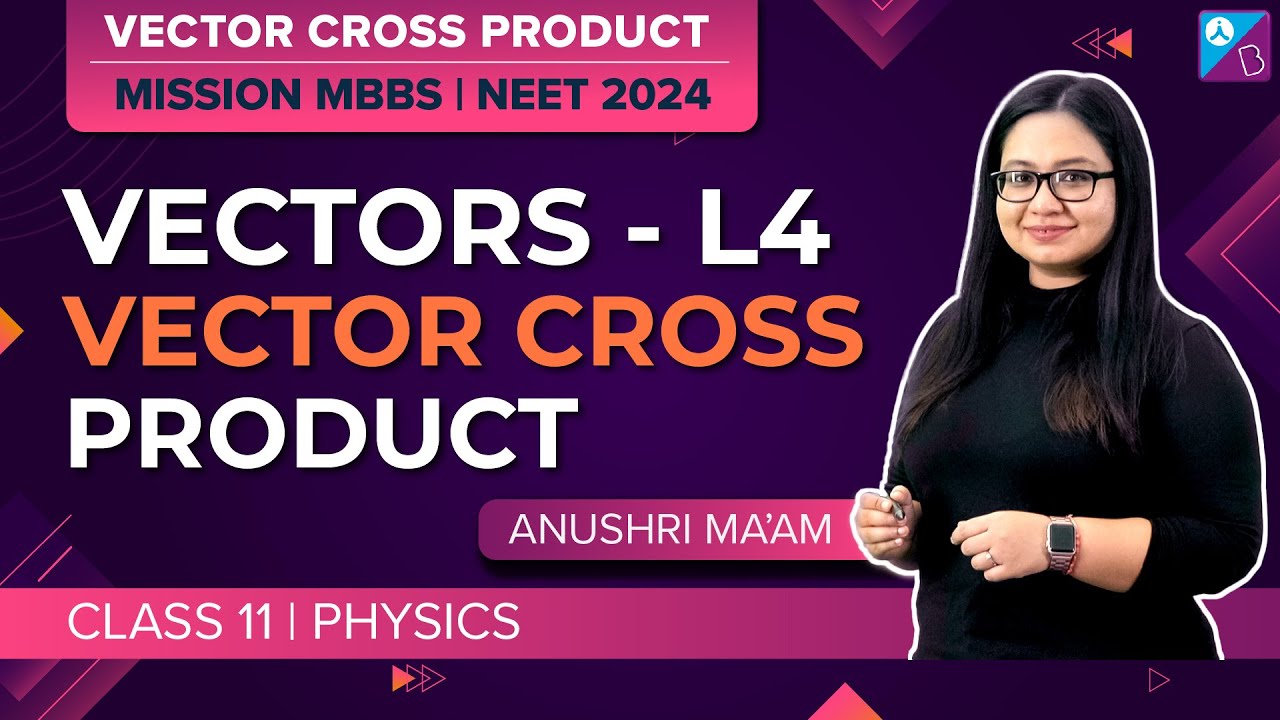The angle between two vectors plays an important role when the two vectors are multiplied. Following are the two ways through a vector multiplication can be carried out:
- Multiplication of a Vector by a scalar
- Multiplication of a vector by a vector
The multiplication of a vector by a vector can be carried out in two ways and they are termed as:
- Dot Product
- Cross Product
The result of a dot product of two vectors is a scalar quantity. The result of the cross product of two vectors is a vector quantity.
Question and Answer
- ½
- -½
- 1
- -1
Answer: (b) -½
2. A force of 50 N acts on a body and displaces it through a distance of 10 meters in a direction making an angle of 600 with the force. What is the work done by the force?
- 100 J
- 150 J
- 200 J
- 250 J
Answer: (d) 250 J
3. If the sum of two vectors is perpendicular to the difference between them. The ratio of their magnitude will be
- 1
- 2
- 3
- 4
Answer: (a) 1
- π
- π/2
- π/3
- π/4
Answer: (d) π/4
- \(\begin{array}{l}8\sqrt{3}\end{array} \)
- \(\begin{array}{l}3\sqrt{8}\end{array} \)
- \(\begin{array}{l}4\sqrt{3}\end{array} \)
- \(\begin{array}{l}3\sqrt{4}\end{array} \)
Answer: (a)
- \(\begin{array}{l}\vec{R}\perp \vec{P}\end{array} \)
- \(\begin{array}{l}\vec{R}\perp \vec{Q}\end{array} \)
- \(\begin{array}{l}\vec{R}\perp (\vec{P}+\vec{Q})\end{array} \)
- \(\begin{array}{l}\vec{R}\perp (\vec{P}\times \vec{Q})\end{array} \)
Answer: (d)
- 20
- 36
- 24
- 34
Answer: (a) 20
- \(\begin{array}{l}\vec{P}+\vec{Q}=0\end{array} \)
- \(\begin{array}{l}\vec{P}-\vec{Q}=0\end{array} \)
- \(\begin{array}{l}\vec{P}\cdot \vec{Q}=0\end{array} \)
- \(\begin{array}{l}\vec{P}\times \vec{Q}=0\end{array} \)
Answer: (c)
- \(\begin{array}{l}0^{\circ}\end{array} \)
- \(\begin{array}{l}25^{\circ}\end{array} \)
- \(\begin{array}{l}90^{\circ}\end{array} \)
- \(\begin{array}{l}180^{\circ}\end{array} \)
Answer: (c)
- 5 Units
- 10 Units
- 15 Units
- 20 Units
Answer: (b) 10 Units
- 5 Units
- 10 Units
- 15 Units
- 20 Units
Answer: (a) 5 Units
- π
- 00
- π/2
- π/4
Answer: (a)
- π
- π/2
- π/4
- 0
Answer: (b) π/2
- \(\begin{array}{l}\vec{b}\cdot \vec{c}\end{array} \)
- \(\begin{array}{l}\vec{b}\times \vec{c}\end{array} \)
- \(\begin{array}{l}\vec{b}\end{array} \)
- \(\begin{array}{l}\vec{c}\end{array} \)
Answer: (b)
Stay tuned to BYJU’S to get more updates on NEET.
Recommended Video:
Vector Cross Product Class 11 Physics – Vectors Concepts

NEET Physics Topics::
- Physics Formulae For NEET
- NEET Physics MCQs
- NEET Physics Syllabus
- NEET Physics Important Topics
- How to Score 170 Plus in NEET Physics
- Last Minute Preparation Tips for NEET Physics
- NEET Physics Weightage
I love this website. This website is a good way for learning and to ready MCQs for any topic.